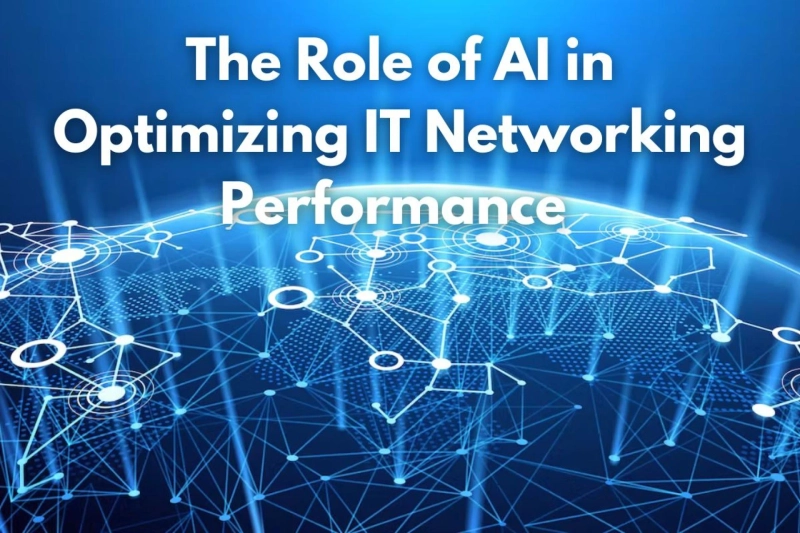In the ever-evolving landscape of Information Technology (IT), the synergy between Artificial Intelligence (AI) and IT networking has become a linchpin for organizations striving to achieve optimal performance, reliability, and efficiency in their digital infrastructure. As businesses increasingly rely on interconnected systems and data-driven processes, the demand for responsive and intelligent IT networking solutions has never been more critical. This article delves into the transformative role of AI in optimizing IT networking performance, exploring how intelligent algorithms, machine learning, and automation are reshaping the traditional paradigms of network management.
1. Intelligent Network Monitoring and Predictive Analysis
AI brings a paradigm shift to network monitoring by introducing intelligent, real-time analysis and predictive capabilities. Traditional monitoring tools often rely on predefined thresholds and reactive responses to issues. In contrast, AI-powered solutions continuously analyze network data, identify patterns, and predict potential anomalies or performance bottlenecks. This proactive approach allows IT professionals to address issues before they escalate, minimizing downtime and ensuring a more reliable network infrastructure.
2. Dynamic Network Optimization with Machine Learning
Machine Learning (ML) algorithms play a pivotal role in dynamic network optimization. These algorithms learn from historical data, user behavior, and network patterns to adaptively adjust parameters and configurations. Whether it's optimizing routing protocols, load balancing, or bandwidth allocation, ML empowers networks to dynamically respond to changing conditions. This adaptability is particularly crucial in environments with fluctuating workloads, ensuring optimal performance under varying circumstances.
3. Automated Network Configuration and Management
AI-driven automation is streamlining network configuration and management tasks that were once labor-intensive and prone to human error. Intelligent automation tools leverage AI algorithms to analyze network requirements, assess performance metrics, and autonomously configure network devices. This not only accelerates the deployment of new services but also reduces the risk of misconfigurations, enhancing overall network reliability.
4. Enhancing Security Through AI-Driven Threat Detection
In the realm of IT networking, security is paramount. AI significantly bolsters network security by providing advanced threat detection and response capabilities. Machine learning algorithms can analyze network traffic patterns, identify anomalies indicative of security threats, and respond in real-time to mitigate risks. The ability to distinguish between normal and malicious network behavior enhances the overall cybersecurity posture, safeguarding sensitive data and critical infrastructure.
5. Network Capacity Planning and Scalability
AI plays a pivotal role in network capacity planning, ensuring that IT infrastructure aligns with organizational growth and demands. By analyzing historical usage patterns and predicting future requirements, AI algorithms assist in optimizing network resources. This proactive approach enables organizations to scale their networks efficiently, preventing performance bottlenecks and ensuring a seamless user experience, especially in dynamic and rapidly expanding environments.
6. Improving User Experience with AI-Driven Personalization
The integration of AI in IT networking goes beyond infrastructure optimization; it extends to improving the end-user experience. AI algorithms analyze user behavior, application preferences, and network usage patterns to personalize the delivery of services. This personalization enhances user satisfaction by ensuring that critical applications receive priority, latency-sensitive tasks are expedited, and bandwidth is allocated based on user needs.
7. Challenges and Considerations in AI-Optimized IT Networking
While the benefits of AI in optimizing IT networking performance are significant, organizations must navigate challenges such as data privacy concerns, the need for skilled AI professionals, and the integration of AI into existing network architectures. Ensuring transparent AI decision-making processes and fostering a culture of ongoing learning and adaptation are crucial for successful AI implementation.
Conclusion: The Intelligent Future of IT Networking
AI's role in optimizing IT networking performance marks a paradigm shift toward intelligent, adaptive, and proactive network management. As organizations continue to embrace digital transformation, the symbiotic relationship between AI and IT networking will be instrumental in creating agile, secure, and efficient infrastructures. By harnessing the power of AI-driven insights, organizations can not only meet the demands of today's dynamic digital landscape but also position themselves for success in the intelligent future of IT networking.


